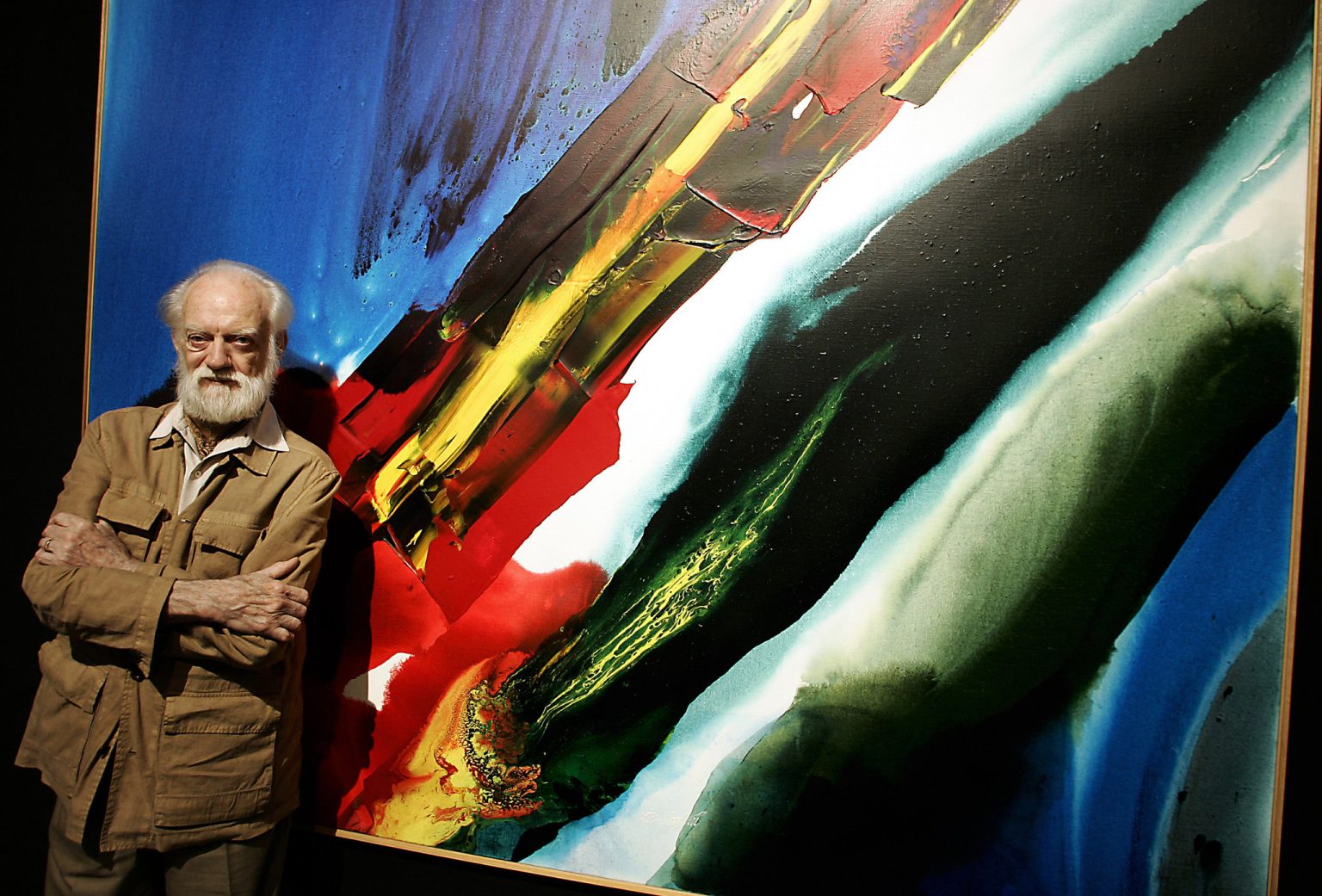William Paul Jenkins, an American abstract impressionist painter, was celebrated for his innovative expressionist paint application techniques. Born in Kansas City, Missouri, in 1923, Jenkins had an early encounter with the renowned architect Frank Lloyd Wright, who was reconstructing his great uncle’s church after a fire. Despite initial suggestions to pursue agriculture, Jenkins was drawn to painting, a path solidified after meeting the American artist Thomas Hart Benton.
Jenkins briefly studied at the Kansas City Art Institute while working at a ceramics factory, where he observed glazing techniques that would later influence his painting style. He relocated to Ohio to live with his mother and graduated from Struthers High School before serving in the U.S. Maritime Service and the U.S. Naval Air Corps during World War II.
In 1948, Jenkins moved to New York City and studied at the Art Students League under the G.I. Bill, where he encountered Yasuo Kuniyoshi, a Japanese American painter, photographer, and printmaker. During this time until 1952, Jenkins formed connections with artists like Jackson Pollock and Mark Rothko. He then settled in Paris in 1953, where he began translating the glazing effects he observed in his youth into his paintings.
Jenkins’ first solo exhibition was held at the Martha Jackson Gallery in 1956, upon his return to New York in 1955. This gallery represented him for the next two decades. He continued to divide his time between Paris and New York for the rest of his life.
In 1960, Jenkins transitioned to using acrylic on canvas, applying thinned acrylic paint to white primed backgrounds, often starting at the corners and manipulating the paint flow by altering the canvas orientation. Sometimes, he used blade-like tools to direct the paint, primarily using vibrant colors in a series titled ‘Phenomena’. New York Times critic Roberta Smith once described his paintings as “too beautiful for their own good.”
Jenkins was the subject of major retrospectives at the Houston Museum of Fine Arts and the San Francisco Museum of Art between 1971 and 1972. His profile rose further after the 1978 film “An Unmarried Woman”, featuring Alan Bates, showcased his work. Jenkins was involved in coaching Bates on his artistic process for the film.
Jenkins passed away in 2012 in New York City. His paintings, reminiscent of watercolors due to his technique of thinning acrylic paint, remain highly admired. He was known for not using a paintbrush, allowing the paint to naturally pool, bloom, and flow across the canvas. Jenkins’ art continues to captivate in the fine art world, with his works often exceeding their estimated prices at auctions. His legacy as an abstract expressionist remains vibrant and influential in the 21st century.

